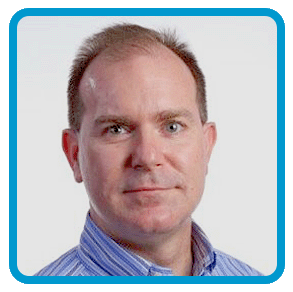
Dr. Henderson is Vice President of Computational & Imaging Sciences at Flagship. With a passion for innovative technology and solving problems for clients, Dr. Henderson not only inspires his team but also pushes the boundaries of what’s possible in our industry. We recently talked to him about why he became a scientist, what he enjoys about his work, and his thoughts on the future.
Did you always want to be a scientist?
Yes, my great aunt was a well-known geneticist for her time, at Texas A&M. In the 1930’s, she was one of the first women to graduate from the University of Texas with a PhD. She studied under Patterson in his famous fruit fly lab and then went on to Texas A&M as a cotton geneticist. We would visit her in College Station often and I thought her work was fascinating. I initially intended to study and do research on genetically engineering beef cattle for economically important traits.
Did you have other jobs in science before joining Flagship?
Yes, here are a few highlights…
- Backcountry horseback guide in the San Juans in CO.
- Intern at Granada Biosciences in their embryo cloning lab cloning beef cattle.
- Quantitative Geneticist at PIC, the global leader in commercial swine breeding.
- Research Scientist at Insightful Corporation, where I got to know all the R Core members personally.
- Research Fellow at Rosetta Inpharmatics, working with Eric Schadt.
- Founding member of Sage Bionetworks.
- NanoString Technologies where I designed the analytics portion of the AtoMx system for CosMx.
What were some of the most important takeaways from these past positions?
The contacts I made in the R world while at Insightful and REvolution Computing have become lifelong friends. I was also able to influence some of the early directions of the R language and parallel computing strategies people use today.
The subcellular resolution of individual RNA species capable through the CosMx platform at NanoString was incredible. Designing tools to analyze data at that spatial resolution made me want to go back to the CRO world and help solve problems for customers directly.
Has there been a defining moment in your career?
The switch I made from molecular genetics in my MSc to quantitative genetics for my first job was revolutionary for me. No more dealing with carcinogens or neurotoxins on a daily basis, no more cramps in my thumbs from pipetting, and no more coming in at 3am to do the restriction enzyme portion of my PCR-RFLP experiments. Statistical analyses were just as fresh at 9am as they would have been had I come in at 3am. Plus, the ready access to thousands of genotyped pigs plus all the quantitative measurements on them was a really fun playground.
If I was to change anything about my career path it would have been to start out in the quantitative sciences instead of the molecular sciences.
What do you enjoy most about the work you do at Flagship?
I really like the daily challenges this organization brings, and I’m always learning new things and skills. Each member of the team is an expert in their own distinct field, yet they all share some common skills. I enjoy the chance to mentor the members on my team based on my experience and to learn from them based on their unique skills. Each team member really wants to do their best to help make Flagship and our clients successful.
Do you have any advice for aspiring scientists?
Find the topic or area of research that most excites you — what you find the most fun. You will enjoy work more if you do. Scientific research is not like many other careers in that even when you’re not at work or in the office, you’re still thinking about how to solve your research problems. This is a career that is more of a life choice than a 9 to 5 job. Find something you love to do, so it doesn’t become a chore to do. I would also suggest taking some business courses as that will be useful later as you progress in your career.
What do you think about AI?
I love it. AI is like a small child in that it only knows what you teach it and what it encounters. You have an opportunity to mold it into what you want it to become. Also like a small child, it doesn’t always respond in predictable ways.
What is in store for the future of Spatial Biology?
Our current, large-scale ability to measure molecules where they operate and to put that into the context of their neighbors was something we could only dream of earlier in my career. I’m excited to see higher plexity for all biomarker types and greater resolution (especially for protein and metabolites) as that will help drive new methods for cell typing, multi-level analyte methods, new network analysis methods, better differential expression methods, and so on.
About Dr. David Henderson
David Henderson is the Vice President of Computational and Imaging Sciences at Flagship Biosciences. He has a PhD in Statistical Genetics from Virginia Polytechnic Institute and State University, a Master of Science in Animal Science from South Dakota State University, and a Bachelor of Science in Animal Science from Texas A&M University.
